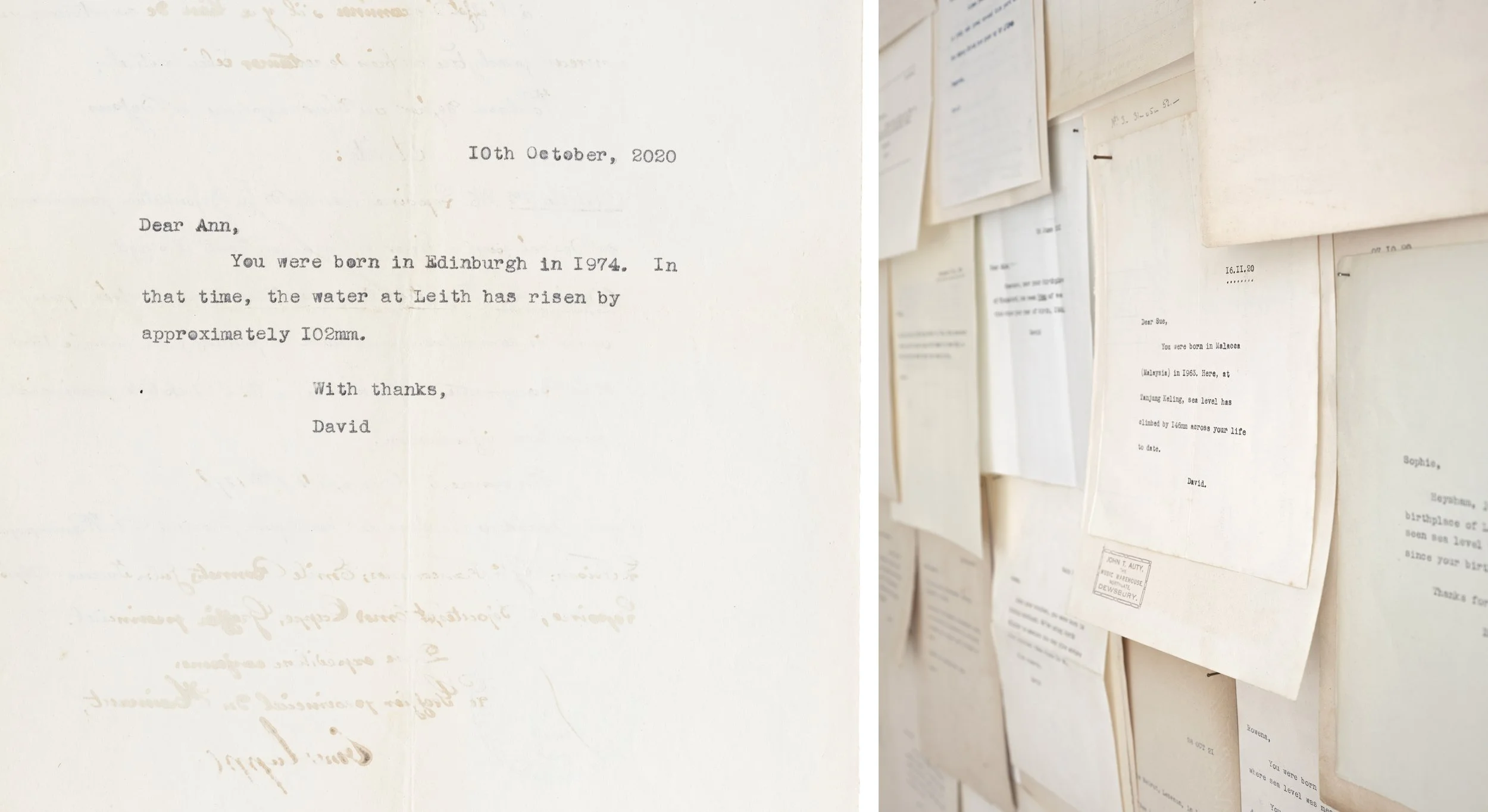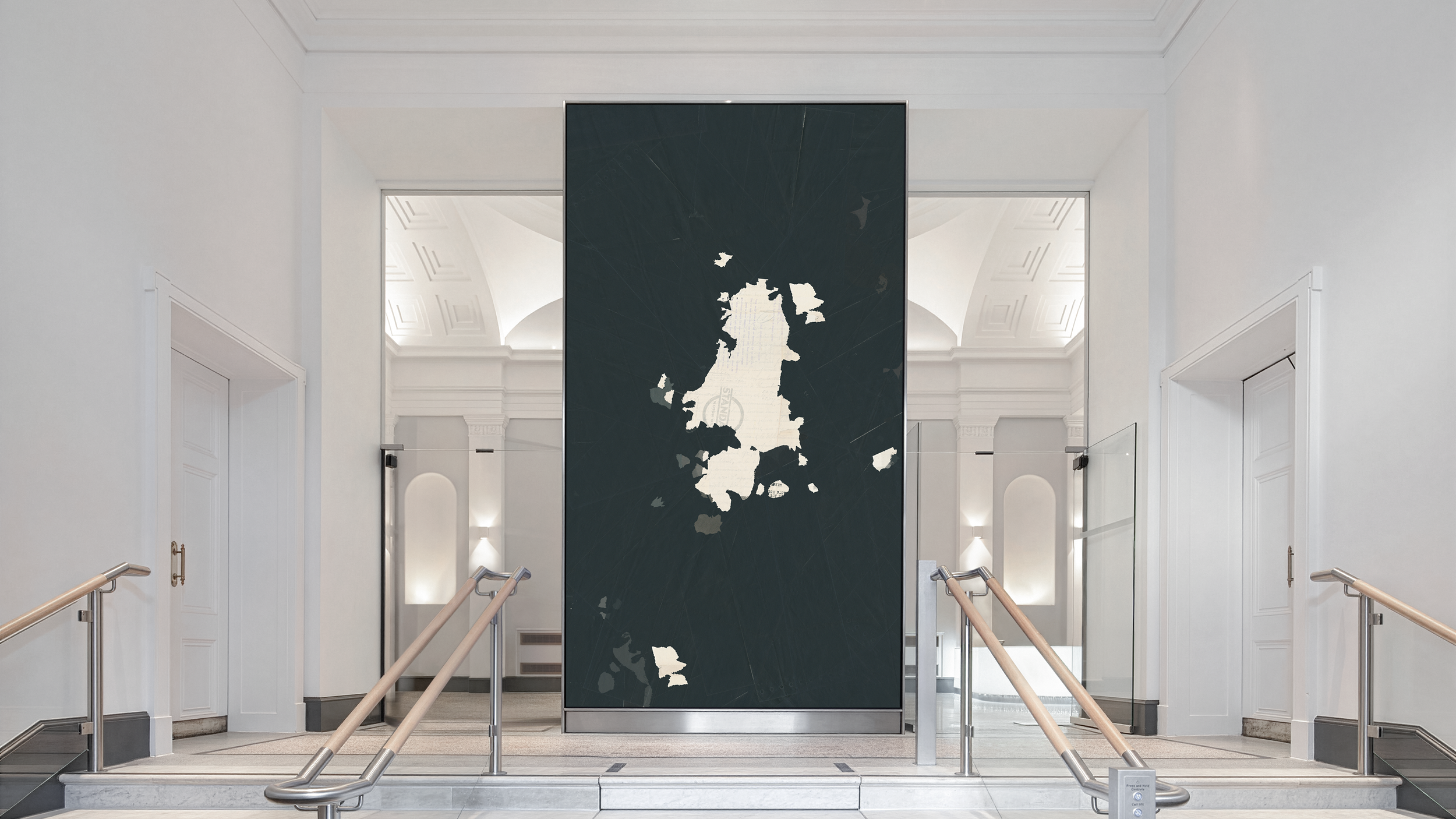Nature Turns: Proposal
David Cass
Ice is melting and sea levels are rising at rates far beyond natural cycles, turning established rhythms on their head. We can no longer rely on predictable oceanic or cryospheric patterns. This installation proposal weaves personal histories (of real people) with environmental science, tracing localised sea-level changes around the world alongside the retreat of ice.
Above: Mockup for a progressive installation.
Here, light papers (“letters”) represent sea-ice, and a surface of thin sheet-steel represents dark (heat-storing) sea.
Across the last six years, I’ve been working on a body of installation and audence engagement projects which offer personalised insights into the issue of rising sea levels. Sea-rise is not even around the globe, the rate of change varies dramatically from place to place. In collaboration with a scientist and oceanographer, a formula has been found, to provide place-specific sea-level measurements.
Sea levels are rising around the world, out of step with any previously recorded natural fluctuation. Loss of Earth’s ice (particularly at our Poles) is one of the largest reasons for this. This isn’t because melting ice raises sea levels, but, because its ability to reflect sunlight back into the atmosphere is reduced as it diminishes, and so warming is then stored in our oceans, which rise as a result.
Satellite and tide-gauge readings agree: from the measuring of coastal water levels daily; to the tracking of reduced summertime ice cover in the Arctic (summer cover is a clear indicator of change, used as an example here as a microcosm of the broader crisis).
The design of the proposal (at top of webpage) is inspired by an Arctic aerial view. The composition is inspired by two previous installations, below:
‘Where Once the Waters’ in Venice | Here, some 700 “letters” explain sea-level changes to correspondents around the world.
‘Where Once the Waters’ in Massachusetts.
“Letter” example (written to Rhea, who was born in New York, describing a rise of over 200mm since her birth year of 1951. The letter was also presented by the water, in NY).
I propose an “alternative ice map” assembled from antique typed letters (addressed to real people, including correspondents in Scotland) mounted on thin metal sheets, each fixed with magnets. The papers represent ice and the metal represents sea.
Gallery staff will remove ~20 letters per day so that, over the run of the exhibition, the map visibly erodes – an aerial mapping of Arctic summertime ice extent from the late 1800s through the mid-2030s.
Mockup (detail) for RSA Lower Galleries: a combination of two strands of enquiry.












